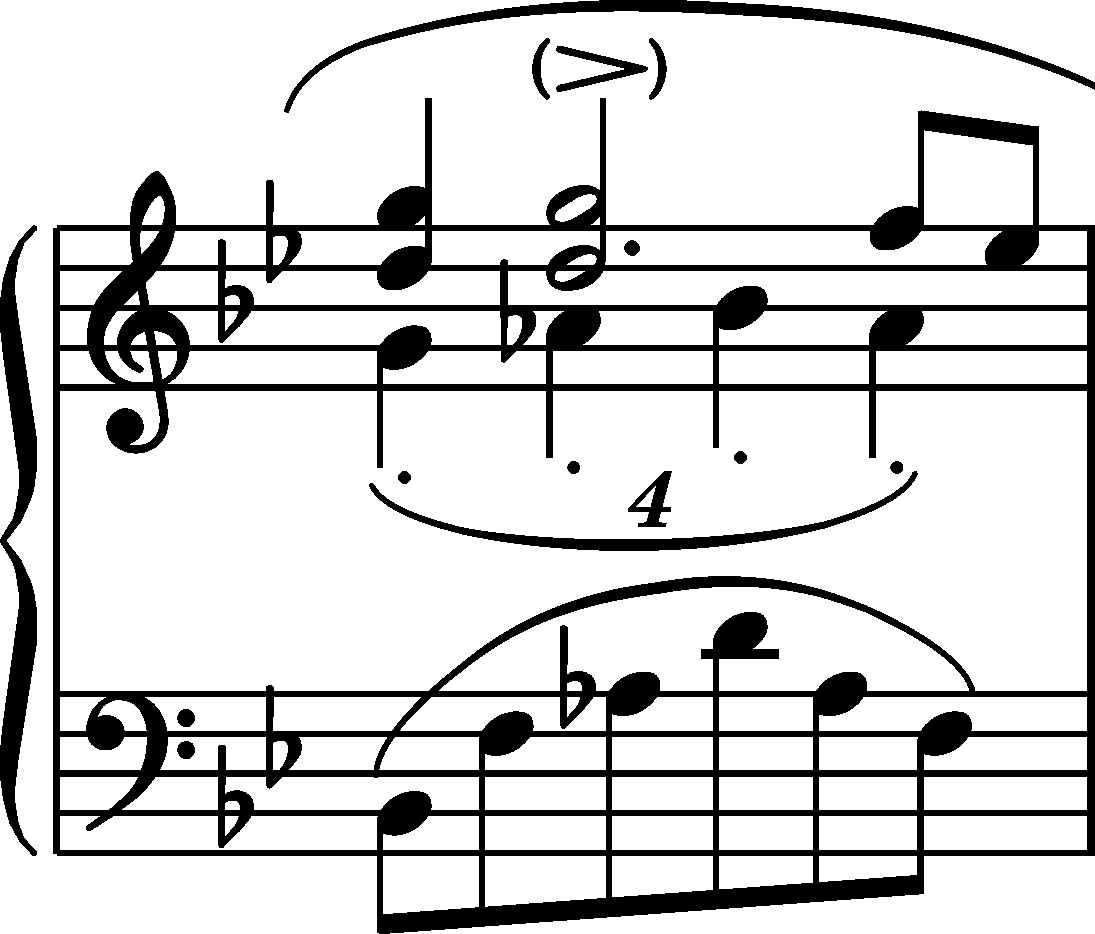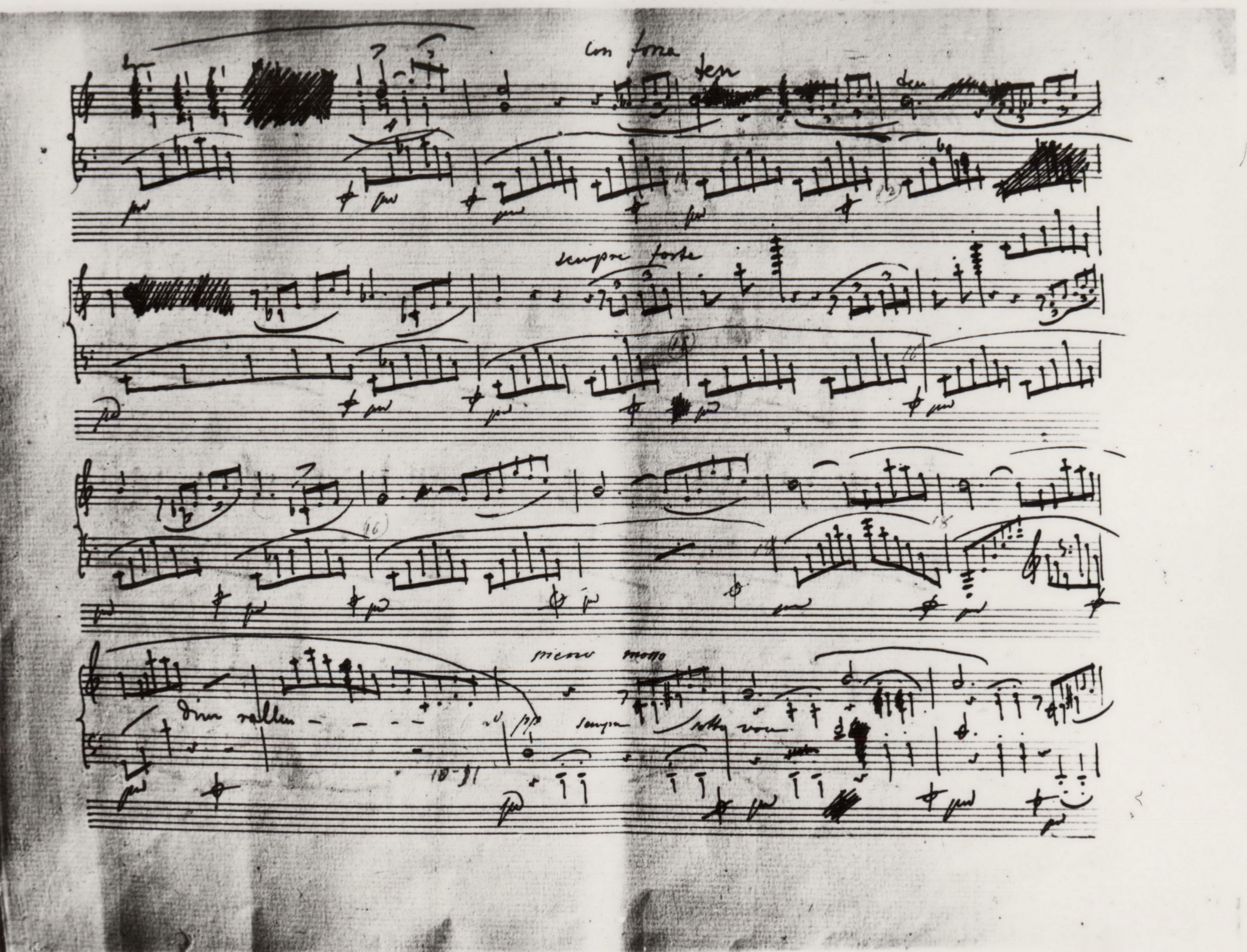



The individual voices of the polymetric R.H. figure are not strictly placed in any of the sources, regardless of whether with respect to each other or whether with respect to the L.H. quavers. According to us, as far as the mutual relations between the R.H. voices are concerned, the only imprecision in the notation of A (→FE), i.e. all voices falling on the a 1-d1-g2 chord, is intentional and directly indicates the performance manner intended by Chopin. In turn, the attempts of GE and EE to perfect this notation are unsuccessful – in both editions the quaver triplet in the top voice fills the last crotchet of the bottom voice quadruplet, which is a mistake, since the top voices are formally written down in a regular three-crotchet division. Moreover, the aforementioned chord was divided by EE, which, although mathematically correct, is contrary to the Chopinesque notation and most probably to the performance too.
1-d1-g2 chord, is intentional and directly indicates the performance manner intended by Chopin. In turn, the attempts of GE and EE to perfect this notation are unsuccessful – in both editions the quaver triplet in the top voice fills the last crotchet of the bottom voice quadruplet, which is a mistake, since the top voices are formally written down in a regular three-crotchet division. Moreover, the aforementioned chord was divided by EE, which, although mathematically correct, is contrary to the Chopinesque notation and most probably to the performance too.
As far as the mutual arrangement of both hands is concerned, it is only the version of FE that can be considered correct, i.e. the only featuring the correct synchronisation of the R.H. quadruplet with the L.H. quavers. The version of A is simply inaccurate in this respect, while the one of GE and EE – erroneous.
In the main text we reproduce the notation of FE, the only one devoid of mistakes in the arrangement of notes yet preserving the nature of the notation of A (a 1-d1-g2 as the second element of the quadruplet). According to us, practically, one could apply another improvement: the last 2 quavers could be included in the superior rhythm of the crotchet quadruplet:
1-d1-g2 as the second element of the quadruplet). According to us, practically, one could apply another improvement: the last 2 quavers could be included in the superior rhythm of the crotchet quadruplet:  . In the Chopinesque version, the gap between the last a
. In the Chopinesque version, the gap between the last a 1 note in the quadruplet and the f1 note belonging to the triplet is very small (1/6 of a quaver), and the difference between the position of the e
1 note in the quadruplet and the f1 note belonging to the triplet is very small (1/6 of a quaver), and the difference between the position of the e 2 quaver in the Chopinesque version and the one suggested here is twice as much smaller, which justifies them being equated.
2 quaver in the Chopinesque version and the one suggested here is twice as much smaller, which justifies them being equated.
Compare the passage in the sources »
category imprint: Interpretations within context; Differences between sources
issues: EE revisions, GE revisions, Inaccuracies in A
notation: Rhythm

